- Administrator
- Albums and Singles
 The photographs that comprise the artwork for Characters at the Water Margin, of the Hoh River and of Washington State’s Pacific coast, teem with secluded life, the same life that Loren Chasse presents in his music. It’s an unusual sort of life, easy to miss despite its ubiquity. Gnarled tree trunks, stones worn into smooth ovals, driftwood piled into broken lattices; by definition these are dormant and inanimate things, but Chasse listens and composes with a heuristic ear. Along and above the Olympic Peninsula’s jagged shoreline, small commotions lie in wait, accompanied by the constant pulse of the ocean. Tucked away at the foot of a national forest, in the wreckage of a glacial waterway, they are all but invisible. The circumstances of their appearance depend on close listening, on the slowing down of time, and on a willingness to hear the depth of music that subsists in the tiniest places.
The photographs that comprise the artwork for Characters at the Water Margin, of the Hoh River and of Washington State’s Pacific coast, teem with secluded life, the same life that Loren Chasse presents in his music. It’s an unusual sort of life, easy to miss despite its ubiquity. Gnarled tree trunks, stones worn into smooth ovals, driftwood piled into broken lattices; by definition these are dormant and inanimate things, but Chasse listens and composes with a heuristic ear. Along and above the Olympic Peninsula’s jagged shoreline, small commotions lie in wait, accompanied by the constant pulse of the ocean. Tucked away at the foot of a national forest, in the wreckage of a glacial waterway, they are all but invisible. The circumstances of their appearance depend on close listening, on the slowing down of time, and on a willingness to hear the depth of music that subsists in the tiniest places.
The "character" in Characters at the Water Margin is ambiguous. Does Loren Chasse think about this album in terms of its material qualities, like hard and soft and smooth and rough? The sounds he focuses on, largely tactile and granular, definitely support that view. Or is his subject a place and a time in the personal sense, as if coastal Washington were a character in a story or the identity of a person that lives not too far away? The liner notes and album art, as well as the music, support that interpretation too.
The answer is probably both. Field recordings near the mouth of the Hoh River are the material for and the subject of this album, and Chasse blends the two indiscriminately. The foamy rush of ocean waves, the rough crack of dry timber, and the chalky mineral sound of granite and shale pop out in these songs, as does the manner in which Chasse has altered and layered them. Even within the same song, his recordings are sometimes clear and sometimes opaque, either finely detailed or muddied by the movement of wind, a lack of visual context, or by the muffled quality of the recordings themselves. The mix remains sparse almost the entire time, however, and often borders on the silent. The idea is to listen closely, to hear all the little details in whatever way they are presented. That includes hearing Loren Chasse in the background, interacting with and observing his surroundings.
Those interactions include some amount of post-production, though it is hard to say whether or not Chasse could have affected the album’s most unnatural sounding noises, like the mysterious electric hum at the beginning of "Handfuls on an Edge of Foam," on site. Guessing whether this sound or that sound occurred in studio or in the field obscures the point anyway. The presence of the ocean, of the wind, and of flora and fauna is constant. Location matters. What is heard and how it is heard are equally important, but not just in a "guess how he did it" way. Like characters in a novel, the elements in Characters at the Water Margin amass an emotional, or at least a imaginative, power over time. The obviously drummed rhythms on "Ovoids for a Tumbling Pattern," the cold spray of salt water, and the intermittent call of seagulls all point to and away from themselves, as do the odd spells of static, distortion, and amplified ambiance. At times the music is relaxing, almost meditative, its impressive emptiness an opportunity to shut the rest of the world out. At other times it is alien, as when the shifting rocks and squishy soil suggest the presence and movement of an unimaginable creature.
And it is always colorful. The tide doesn't simply rise and fall, the ocean attacks the land in concentrated surges. The trees don't just rustle when the wind blows, the hollow branches of old wood sing when the air slides over them, and grains of sand and silt fall in avalanches, unearthing a hidden network of debris and corroded artifacts. With the ear pressed so closely to the ground, even the dirt moves and breathes like a living thing. From this perspective the smallest event acquires significance and the world grows that much larger.
samples:
 
Read More
- Administrator
- Albums and Singles

This is a record about love and resistance. After the broken frigidity of Classical Curves, Jam City returns with an urgent, fearless and strikingly sensitive album of modern pop songs, both crushingly heavy and glitteringly light. Made by modest means, made by any means, the DIY origin of the record speaks to the artist’s faith in the power of music to not only transcend but also to confront, unsettle and suggest an alternative to the total colonisation of art by neo-liberalism. Always raw, always in the red.
There’s no question that you’re listening to the same artist responsible for some of the most intense and influential club tracks of the last 5 years, on an album that could only be realized by Night Slugs. Dream A Garden is not a total break from the world of Classical Curves, but rather an inversion: what becomes of the people struggling to live and love beneath the chrome-plated, vacuous and superficial machinery that we must fight to see beyond? While drawing on a diverse musical history (sound system guitar dynamix, punk, hip hop, grime, country, the gothic and the modern), Dream A Garden remains rooted in the bleakness of the present: everyday life under the regime of high capitalism. Turning the avenues of lifestyle fascism we walk through everyday into psychedelic, surreal daydreams; Jam offers his songwriting as a coping mechanism, a form of re- scrambling a landscape dominated by ideologies of selfishness and hatred.
More information can be found here.
Read More
- Administrator
- Albums and Singles

When Daniel O'Sullivan was invited to curate the sixth installment of Transmissions Festival in Ravenna in 2013, his first request was for Charlemagne Palestine, the shamanic world-maker and sacred toy emissary associated with the New York, '60's minimalist scene and one-time student of Pandit Pran Nath. Palestine is known primarily for extended performances with Bösendorfer piano, cathedral organs and falsetto voice, but has also exhibited his visual work internationally. After Transmissions, O'Sullivan invited Palestine to play a two-night residency at Cafe Oto, the second night of which was a collaboration with Grumbling Fur, the duo of O'Sullivan and Alexander Tucker.
The performance at Oto was a ritualistic union of crystalware, processed strings, live tape-manipulations, Indian harmonium, shimmering piano clusters, bleating cattle, a Japanese orgy, disembodied vocal harmony and rousing choruses often led by sing-a-ma-jigs (singing Fisher-Price toys affectionately referred to as "the singing assholes"). A continuous flow of overtones and plainchant sieved through mutant simulations of processed pulses, orbiting strings and heliotropic vocal mantras.
Following their recent critically acclaimed avant-pop albums Glynnaestra (Thrill Jockey) and Preternaturals (The Quietus), this is the first incarnation of the Grumbling Fur alter-ego "Time Machine Orchestra," an alias put together to explore extended drone works, improvisation and automatic composition.
More information can be found here.
Read More
- Administrator
- Albums and Singles
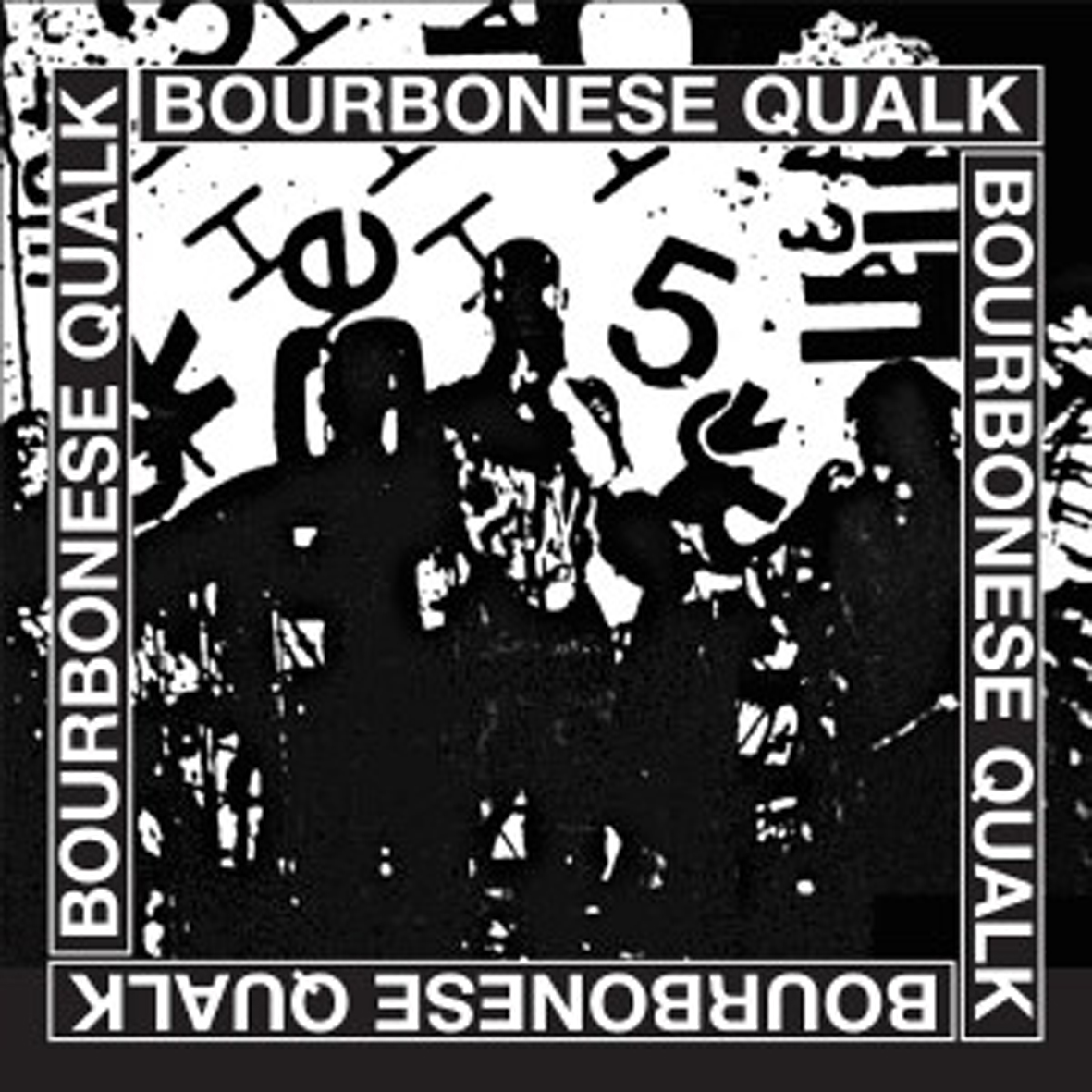 On paper, this compilation seems like exactly what the world needs: a new compilation celebrating the legacy of a criminally underappreciated and mostly forgotten band whose entire catalog is largely out-of-print.  In reality, however, Bourbonese Qualk 1983-1987 is kind of a perplexing mixed success, as Mannequin decided to focus exclusively on Qualk's rather primitive early years, bypassing almost all of their more distinctive and original work.  There is still a lot to like here, as the band originally sounded kind of like an anarcho-punk band that could not afford guitars or a full drum kit, but this era definitely would not have been my first choice if I were commencing my own reissue campaign.
On paper, this compilation seems like exactly what the world needs: a new compilation celebrating the legacy of a criminally underappreciated and mostly forgotten band whose entire catalog is largely out-of-print.  In reality, however, Bourbonese Qualk 1983-1987 is kind of a perplexing mixed success, as Mannequin decided to focus exclusively on Qualk's rather primitive early years, bypassing almost all of their more distinctive and original work.  There is still a lot to like here, as the band originally sounded kind of like an anarcho-punk band that could not afford guitars or a full drum kit, but this era definitely would not have been my first choice if I were commencing my own reissue campaign.
This compilation is essentially a "greatest hits" overview of the first five Bourbonese Qualk albums, which I suppose offers significant utilitarian value for anyone delving into their somewhat extensive catalog.  Granted, all five albums are available in their entirety for free at the Bourbonese Qualk website, but I can see the appeal of having their highlights condensed into a single attractive-looking package (especially since I vastly prefer Qualk's later work).  There is some internal logic to focusing on this particular period as well, as it covers both the band’s full run as a trio of Simon Crab, Julian Gilbert, and Steven Tanza and their entire stretch of self-released albums (with the exception of 1990's Bo’Qu compilation).
The four pieces collected from 1983's Laughing Afternoon generally capture the group at their most straightforward, primarily consisting of little more than leaden beats, processed unmelodic vocals, and repeating bass lines.  There are certainly some glimmers of the band's more ambitious future in the unusual beat, odd squawks, and tape experimentation in "God With Us," but the core aesthetic at this point is basically just processed shouting over a simple beat.  The only real exception is the brief dub experiment of "Qualk Street," which features some surprisingly melodic guitar work from Crab as well as some unexpectedly fluid drumming from Tanza.
Hope’s five contributions offer quite a bit more promise, though a couple of pieces are just retreads of the previous "thumping-and-shouting" formula with some slap bass thrown into the mix (which definitely does not help matters).  The throbbing, trance-like "Invocation" is very adventurous by 1984 standards though, augmenting its relentless forward movement with shifting percussion flourishes and buried, Eastern-tinged burblings.  Hope also seems to be the point where Qualk started to get weird and hard-to-define in earnest, as the trio also veer into pulsing, straight-forward industrial dance ("Head Stop") as well as something that sounds like a skilled ethnographic forgery ("Black Madonna") until the unfortunate vocals appear to ruin the spell.
1985’s Spike is even more of an oddity, as it was originally released on a German label rather than the trio's own Recloose Organisation or New International Recordings imprints.  Also, half of the album was devoted to the soundtrack for a dance performance, represented here by the fluidly rumbling and ritualistic instrumental "Deadbeat." The rest of the album seems like it was a bit of an informal grab-bag though, culled from recordings the band made while organizing the Atonal festival in Berlin.  For example, "Shutdown" initially starts off with some promising tape-loop work, but quickly becomes another plodding exercise in shouting and "funky" bass playing.  The remaining "Suburb City" and "Pogrom" mark major leaps forward, however, incorporating Crab's Middle Eastern-sounding violin playing into a pair of inventive and enjoyable grooves.
Gilbert and his vocals appear to have been largely absent from 1986’s significantly improved Preparing For Power, though he contributes a passable (if unintentional) John Balance impression in the excellent "Return to Order," which features the band’s most effortlessly melodic and nuanced music to date (it sounds like a reggae Coil, actually).  The other six pieces culled from Power are not quite as immediately gratifying, but a few of them are quite good and tower above almost everything from the preceding albums.  "Outcry," for example, sounds like a soulful collision between jazz and Cocteau Twins, while "Soft City" resembles a mariachi band jamming with a drum machine.  Other pieces, however, sound either like a poor man’s Crass or simply abstract experiments that have not aged particularly well.
Gilbert was officially gone for 1987’s self-titled album, which also proved to be Tanza’s swan song as well.  Curiously, Bourbonese Qualk is only represented by two pieces, but they are both quite strong.  "This is the Enemy" again recalls Coil to some degree, but mostly because it feels like an ingeniously warped fever dream of a song. The closing "Work Over," on the other hand, captures Crab and Tanza at absolute their peak as a rhythm section, locking into a heavy, propulsive, and multi-layered groove beneath some beautifully weird and garbled robotic vocals.
Ultimately, Bourbonese Qualk 1983-1987 is exactly what its title promises, which I suppose makes it a success, albeit one for a somewhat enigmatic audience: I cannot think of anyone who would need this, aside from longtime fans who just want a physical product.  I suppose this also provides a handy overview for the curious, but the curious would be much better served by checking out later releases like On Uncertainty or Unpop long before this, as most of these songs are too rudimentary and dated to offer a big return entertainment-wise in 2015 (except for those with an unhealthy obsession with early '80s industrial music).  That said, I certainly cannot fault Mannequin for wanting to tell the world about Bourbonese Qualk.  Also, the chronological order of the pieces provides a fitfully compelling and informative overview of the formative years of a very idiosyncratic entity.  This may not represent Qualk's best work, but it at least does an excellent job showing how they eventually got there (warts and all).
Samples:
 
Read More
- Administrator
- Albums and Singles
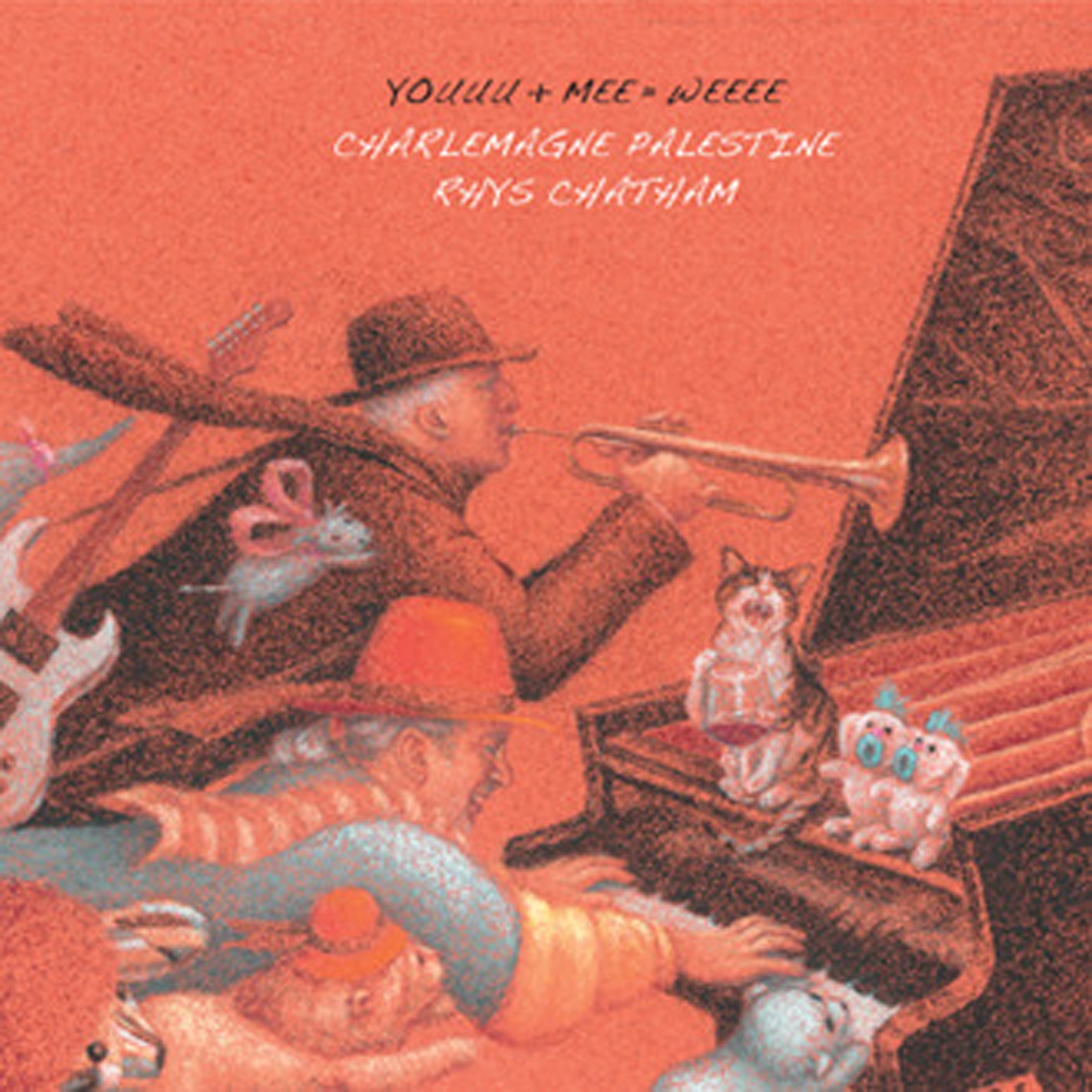 A collaboration between these two avant-garde elder statesmen could have gone any number of ways, given Chatham’s late-career embrace of the trumpet and Palestine’s unrelenting eccentricity.  For the most part, however, the sprawling, nearly three-hour Youuu + Mee is a huge success, taking minimalist drone into some very twisted, unexpected, and dark places (though Palestine's occasional eruptions of yowling vocals remain very much an acquired taste/potential deal-breaker).
A collaboration between these two avant-garde elder statesmen could have gone any number of ways, given Chatham’s late-career embrace of the trumpet and Palestine’s unrelenting eccentricity.  For the most part, however, the sprawling, nearly three-hour Youuu + Mee is a huge success, taking minimalist drone into some very twisted, unexpected, and dark places (though Palestine's occasional eruptions of yowling vocals remain very much an acquired taste/potential deal-breaker).
Youuu + Mee is roughly divided into three hour-long pieces spanning three CDs, prosaically entitled "First," "Second," and "Third."  As it happens, the first piece is my favorite of the lot for a number of reasons.  It is built primarily upon an endlessly rippling two-note piano motif coupled with sustained trumpet drones from Chatham.  After about ten minutes or so, Palestine joins in with some sort of ritualistic approximation of Tuvan throat-singing in his trademark countertenor.  Though that is exactly the sort of thing that could potentially derail the song for me, the singing quickly disappears and Chatham's looped trumpet begins to resemble a threatening swarm of insects while the previously simple and innocent piano ripples steadily drift into darker and darker territory.  It basically sounds like La Monte Young being engulfed in a cloud of angry bees, which is a very cool niche that I do not think anyone else has attempted to fill yet.  Admittedly, there is a bit more to it than that, as the piece is not just an exercise in escalating intensity and insect-mimicry: the duo actually do a very fine job of building and releasing tension throughout, even if the "bee attack" parts are unquestionably the highlights.  That said, I always enjoy Palestine's intense, ringing, and overtone-friendly style of minimalist piano playing, especially when it veers into more dissonant territory.
For "Second," both musicians switch to different instruments, with Charlemagne transitioning to organ and Rhys picking up an electric guitar.  Initially, the two musicians limit themselves to a single slowly strummed chord being repeated over an unchanging organ drone, but Chatham's guitar contribution slowly becomes more complex as he employs his looping pedal.  To his credit, however, Chatham takes his playing in a very different direction that I would have expected, massing his notes into a stuttering, prickly thicket of overtones rather than anything melodic or structured.  For the most part, Palestine keeps his drones fairly tame, patiently shifting chords until the mood darkens once again around the 15-minute mark with an unexpected plunge into a minor key.  Though Charlemagne quickly and seamlessly reverts back to less-threatening chords, that first hint of menace proves to be a harbinger of where the piece ultimately heads.  "Second" takes a long time to become fully unnerving though, as there are some passages of sublime beauty along the way whenever Palestine hits an unexpected chord change or when Chatham allows his guitar noise to drop out to leave only plucked harmonics.  Most of the pleasure, however, lies primarily in hearing the piece transform from its placid beginnings onto a steadily darkening storm over the course of its 60-minute arc.
The final piece is yet another organ-based excursion, with languorous sustained notes from Chatham's trumpet providing shifting coloration for Palestine's lush, static drone.  For a long time, "Third" is quite a conventionally beautiful piece, warmly undulating without a trace of dissonance and gradually embellished by an undercurrent of twinkling piano.  Even Palestine's vocals are kind of enjoyable when they first arrive, transforming the piece into something resembling an exotic mass.  Curiously, Chatham returns to his guitar around the halfway point and the piece morphs into a near-reprise of "Second," albeit one with busier, more melodically active piano and a visceral plunge into the lower octaves.  Eventually it returns to yet another reprise, however, this time a reversion to its own earlier incarnation...but not before Palestine unleashes a wildly unexpected and feral-sounding vocal crescendo that makes me fear for Chatham's safety.  Fortunately, he quickly calms back down and final third of the pieces ebbs to a warm and beautifully rippling conclusion.
The only real criticism I can muster for this epic is that it sounds very much like a Charlemagne Palestine album, with all of the normal caveats that entails: his vocals can definitely be grating at times, but he is also an iconoclastic visionary, so I tend to give him a pass on his rougher edges.  They are definitely there though. He is kind of like an especially delicious meal that has a few large shards of glass in it.  That said, Youuu + Mee sounds like an especially strong Palestine album, which I did not expect at all, as most of the Charlemagne Palestine albums that I love are not particularly recent.  For his part, Rhys Chatham proves to be an excellent foil for a very strange and complicated artist, which is no small feat considering both the size of Palestine's personality and the scale at which Chatham normally works (performing solo is presumably very different than composing for massive guitar ensembles).  Also, neither man plays it at all safe: this is certainly a tour de force, but it is at times a very dissonant and nightmarish one.  Which, of course, is exactly what I would hope for: there are scores of people making pleasant drone albums, so there is no point in two artists of this caliber covering that territory when there is far more ambitious, ritualistic, and uneasy terrain left to discover.
 
Read More
- Administrator
- Albums and Singles
 Ralph Steinbrüchel’s formal training is that of a graphic designer, and his approach to Parallel Landscapes is one of a visual artist more than a sonic one. Packaged with a thick booklet of photography and design, this album is as much of an audio as it is a visual composition. With less of a focus on rhythms or melody, and more on vast expanses of terrain and landscape, simultaneously beautiful and foreboding, the album has a consistent, yet complex sensibility to it.
Ralph Steinbrüchel’s formal training is that of a graphic designer, and his approach to Parallel Landscapes is one of a visual artist more than a sonic one. Packaged with a thick booklet of photography and design, this album is as much of an audio as it is a visual composition. With less of a focus on rhythms or melody, and more on vast expanses of terrain and landscape, simultaneously beautiful and foreboding, the album has a consistent, yet complex sensibility to it.
Split into eight numbered pieces, the first piece is comprised of clean bell tones and strange textures.At times he utilizes a ringing that sounds akin to wind chimes, but resonating in some alien, unexplainable environment.These elements are blended in to the second piece:an extension of the long, shimmering tones and cold, icy environments that are isolating; yet inviting.
Even into the third part, there is a sense of tranquility, albeit an isolated and lonely (one.Distant tones and a soft, calm feel overall are wonderfully peaceful without drifting too close to boring new age territory.On "05" Steinbrüchel works with the same body of tones, stretched out into infinity, but slowly unraveling, shifting from the soft tones to noisier, harsher ambience and distortion.
Just as a visual artist would, Steinbrüchel mixes both the clean lines (tones) with rawer, textural patterns as well.On "04" he introduces (and processes) what sounds like cell phone interference into a subtle, understated accent to the softer passages of beautiful sound.That hint of dissonance reappears in the seventh piece, obscuring the previously soft tones with a slight bit of effective grime.
In addition to drawing moods, Steinbrüchel does the same with environments, creating audio spaces that conjure near visible experiences from the sounds he creates.The microscopic sounds of "06" have a murky, underwater cavernous feel to them.Similarly, the moody "08" has him blending in some lower end swells that have a somewhat dark feel to them, and with the lighter moments still in play, it feels like a star-lit night in the middle of nowhere.
Much like the lengthy booklet that accompanies Parallel Landscapes, Steinbrüchel’s music consists of natural, organic beauty paired with clearly drawn, definitive structural lines and textural patterns.It may have a similarly monochromatic tone as the cover, but the subtle variations and changes are extremely effective in creating a beautiful, inviting, yet still desolate album.
samples:
 
Read More
- Administrator
- Albums and Singles
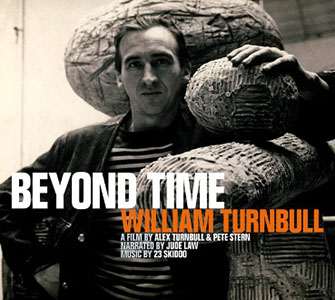 23 Skidoo has had a significant portion of their previous work reissued over the past few years, but Beyond Time is their first album of new material in 15 years. A soundtrack to the documentary of the same name, exploring the life and art of 23 Skidoo core members Johnny and Alex Turnbull's father, William Turnbull, it stands strongly on its own as an atmospheric work that stays faithful to the band’s roots in funk, hip-hop, and unique post-industrial noise.
23 Skidoo has had a significant portion of their previous work reissued over the past few years, but Beyond Time is their first album of new material in 15 years. A soundtrack to the documentary of the same name, exploring the life and art of 23 Skidoo core members Johnny and Alex Turnbull's father, William Turnbull, it stands strongly on its own as an atmospheric work that stays faithful to the band’s roots in funk, hip-hop, and unique post-industrial noise.
Because it is intended to accompany the documentary, the eight instrumental pieces on the album do not make any drastic jumps or shifts in dynamics, instead remaining a consistent experience.Opening piece "Dawning (Version)" stays in league with their latter day output:crackly vinyl, hip-hop loops, and a light organic electronic accompaniment.The band works with the same memorable drum loops on "Interzonal," but within a field of odd samples and heavily effected guitar.
The group uses drastically different rhythms on the misleadingly titled "Calypso," based heavily around a steel drum loop that becomes more of a melodic than percussive element.Rich synthesizers and bass fill out the remainder of the mix, and once the guitar and additional percussion are brought in, the piece sounds nothing like calypso music."Kendang" also has the band utilizing less conventional drums and percussion, with more of an ethnic touch.The jazz horns might be a bit too traditional for me, but the funk heavy guitar and keyboards work wonderfully.
A 23 Skidoo standard, gamelan percussion, appears on "Contemplation," and blended with additional bells the piece ends up taking a darker direction.While it still has the appropriate dynamics for a film score piece, the final passages are chaotic and dissonant, becoming just the right amount of uncomfortable and dissonant."AYU (Ambient)" is the only beatless piece here:with the artists blending vintage sounding analog electronics with tastefully jazzy guitar work, it results in a nice, peaceful piece fitting a film score, but also effective on its own.
For the album's final two pieces, 23 Skidoo reworks two of their older pieces.Both "Helicopterz" and "Urban Gamelan" remain faithful to their original incarnations, just with a slightly cleaner production sound and a bit more restraint befitting a film soundtrack.While I was unable to view the film that Beyond Time accompanies, the soundtrack portion stands on its own independent of the visuals.While the first 23 Skidoo recordings in a decade and a half might not be a mind blowing, revelation of their reappearance, it has the same idiosyncratic sound that has defined their career since its inception, and sits in excellently with their body of work.
samples:
 
Read More
- Administrator
- Albums and Singles
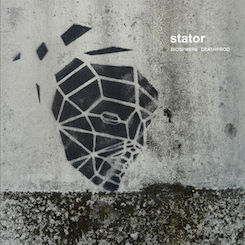
stator (ˈsteɪtə) n
1. (Electrical Engineering) The stationary part of a rotary machine or device, esp of a motor or generator
2. (Aeronautics) A system of nonrotating radially arranged parts within a rotating assembly, esp the fixed blades of an axial flow compressor in a gas turbine
[C20: from Latin: one who stands (by), from stāre to stand]
Biosphere is the main recording name of Geir Jenssen, a Norwegian musician who has released a notable catalogue of ambient electronic music.
He is well known for his "ambient techno" and "arctic ambient" styles, his use of music loops, and peculiar samples from sci-fi sources.
His track "Novelty Waves" was used for the 1995 campaign of Levi's. His 1997 album Substrata is generally seen as one of the all-time classic ambient albums.
He has been working with Touch since 1999.
Deathprod is a musical pseudonym used by Norwegian artist Helge Sten. Sten began creating music under this name starting in 1991, culminating with a box set of most of his recorded work being released in 2004. Simply titled Deathprod, the collection contains three albums along with a bonus disc of previously unreleased, rare, and deleted tracks.
On recordings, Sten is usually credited with "Audio Virus," a catch-all term for "homemade electronics, old tape echo machines, ring modulators, filters, theremins, samplers and lots of electronic stuff."
Sten is a member of Supersilent and works as a producer on many releases on the Norwegian label Rune Grammofon. He has also produced Motorpsycho and has worked with Biosphere on an Arne Nordheim tribute album called Nordheim Transformed.
More information can be found here.
Read More
- Administrator
- Albums and Singles
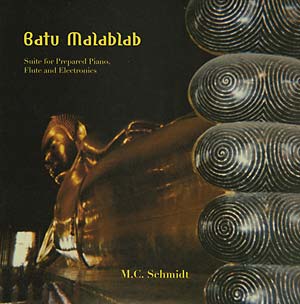
Based in Baltimore, M.C. Schmidt is one half of the acclaimed electronic duo Matmos. As half of Matmos, Schmidt has worked with Terry Riley, Bjork, The Kronos Quartet, Peter Rehburg, the INA/GRM, Rrose, Marshall Allen, Horse Lords, People Like Us, Keith Fullerton Whitman, Antony Hegarty, William Basinski and many more.
Batu Malablab works a dislocating magic, indulging in a tradition of western fantasy of non-western music. Recalling gamelon-inspired experimental classics such as John Cage's prepared piano work, Can's "Ethnological Forgery Series" and Jon Hassell's "Fourth World" ambient music, Batu Malablab is imaginary global music made in the Baltimore basement studio pictured on the back of the LP/CD.
More information can be found here.
Read More
- Administrator
- Albums and Singles

John Wiese's long-awaited Deviate From Balance is the artist’s first album since 2011's Seven Of Wands (PAN). Recorded throughout Europe/UK, Australia, and the US, the album includes scored ensemble pieces including over 20 musicians on each, recorded in Melbourne and Portland, as well as audio documentation of installation pieces "Wind Changed Direction," a four-channel sound piece presented in the garden of the Getty Center (curated by Liars), and "Battery Instruments," an eight-channel piece presented at HSP in New Zealand, now heard for the first time. Also included are various collaborations and recordings from live performances. At over 80 minutes, Deviate From Balance has been packaged as a 2×LP with tip-on gatefold jackets. Musicians appearing include Joseph Hammer, Ikue Mori, Evan Parker, C Spencer Yeh, Joe Preston, Smegma and countless more. The material is extremely diverse and services as a comprehensive and detailed document of this prolific individual's work over the past several years.
This release coincides with an artist monograph of the same title, published by Hesse Press in Los Angeles, featuring a number of pieces represented on the double-album.
More information can be found here and here.
Read More
- Administrator
- Albums and Singles
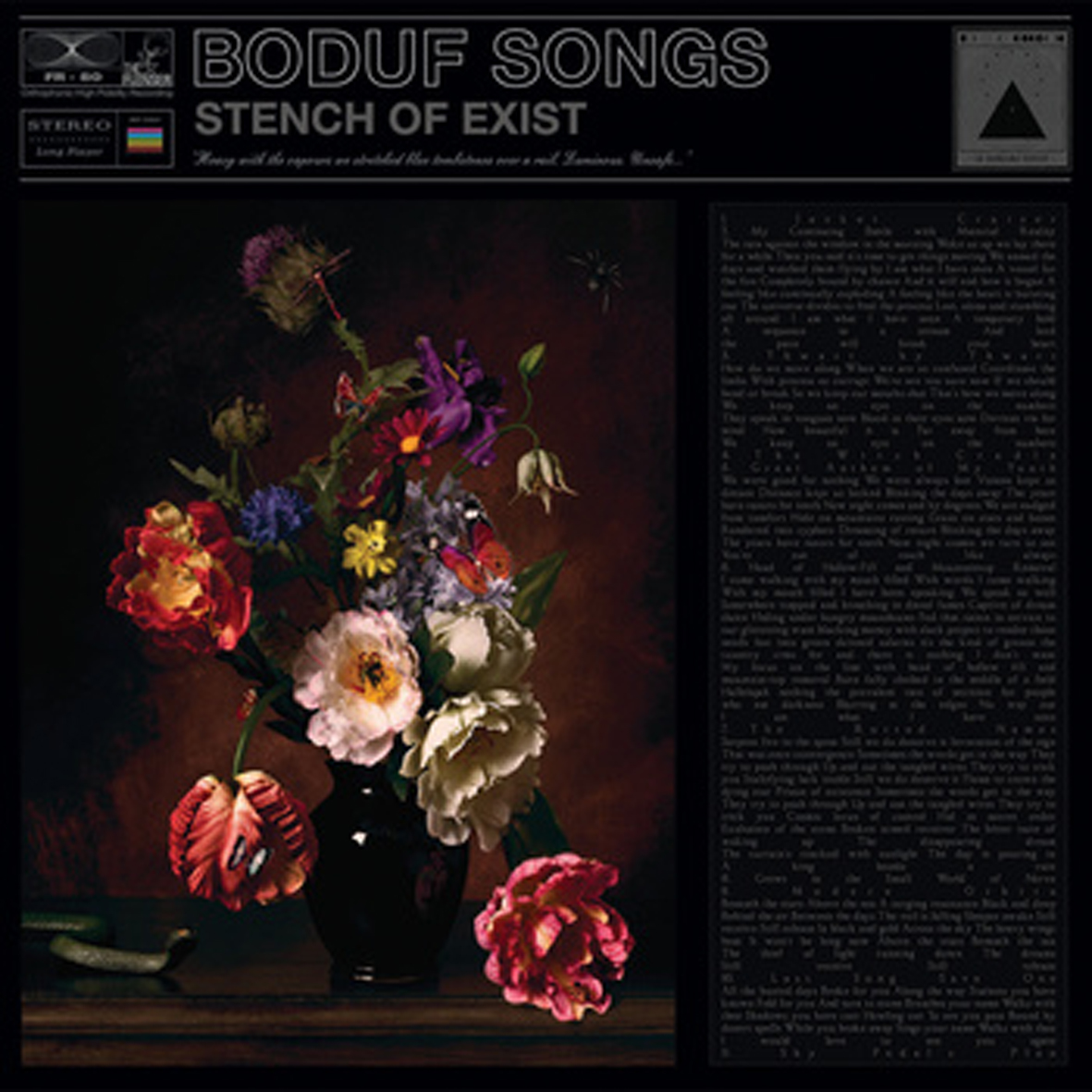 As much as I like Boduf Songs, I have to admit that the albums began to all blur together for me at some point, as Mat Sweet’s hushed, morbid, and deliciously Lovecraftian aesthetic is an extremely specific one that he has mined for quite a long time (though 2013's Burnt Up On Re-Entry gamely tried to shake-up that formula).  I certainly do not blame him, as it is a very appealing and distinctive niche, but there is quite a lot of similar-sounding material out there as a result.  And now there is still more…sort of: Stench of Exist is a return to the "classic" Boduf sound, but with some healthy vestiges remaining from Sweet's more adventurous recent work.  The end result is probably one of Mat's finest albums to date and one that definitely features a couple of Boduf's strongest songs ever.
As much as I like Boduf Songs, I have to admit that the albums began to all blur together for me at some point, as Mat Sweet’s hushed, morbid, and deliciously Lovecraftian aesthetic is an extremely specific one that he has mined for quite a long time (though 2013's Burnt Up On Re-Entry gamely tried to shake-up that formula).  I certainly do not blame him, as it is a very appealing and distinctive niche, but there is quite a lot of similar-sounding material out there as a result.  And now there is still more…sort of: Stench of Exist is a return to the "classic" Boduf sound, but with some healthy vestiges remaining from Sweet's more adventurous recent work.  The end result is probably one of Mat's finest albums to date and one that definitely features a couple of Boduf's strongest songs ever.
Stench of Exist begins, quite appropriately, with a disorienting minute of gnarled howls, blasts of static, stuttering mechanical noises, and an ominous hum, evoking everything from a fractured vision of the apocalypse to the fitful awakening of something large and evil.  That makes for an amusing and excellent segue into the album's first real song, the elegant, slow, and subdued "My Continuing Battle With Material Reality."  Built upon an unadorned, descending organ motif, "My Continuing Battle" gradually augments its skeletal structure with a host of inspired touches, such as a wonderfully muted and squelching pulse and some surprisingly heavy and well-timed orchestral swells.  Though it also boasts some fine lyrics, the real achievement is how all of the various components come together to form such a throbbing, simmering, and masterfully controlled whole.
The following "Thwart By Thwart," however, takes a very different and unexpectedly anthemic direction.  Though I had no idea that Mat had that type of song in his arsenal, the pounding tom-tom rhythm, fluid piano hook, and unexpected crescendo of hand claps proves to be a deliciously perverse foil for his grim lyrics.  It truly should not work, yet somehow it does.  Later, "Head of Hollow-Fill and Mountain-Top Removal" offers up yet another surprise divergence, opening with a heavy Pete Swanson-esque industrial-techno pulse before morphing into a brooding interlude in which a computer-voiced narrator shares a poetic and creepily dystopian reverie over swells of feedback and strange snatches of melody.  Stench of Exist’s final (and greatest) triumph then occurs shortly afterward with "Modern Orbita," which enhances the standard Boduf slow-motion gloom-crawl with muscular, vibrant drums and a masterfully executed swarm of fluttering, burbling psychedelic touches.  It is without a doubt my favorite Boduf piece that I have ever heard, as everything again comes together brilliantly: it is smart, melodic, bass-heavy, propulsive, hooky, warped, and unpredictable in all the right places.  I cannot overstate how eerily graceful Mat's touch can be on this album.
For the most part, the remainder of the album reverts back to business-as-usual, which is only a flaw for those expecting a start-to-finish, out-of-nowhere masterpiece or a complete reinvention.  Those who are picking up the new Boduf Songs album because they like Boduf Songs should have no problem with that.  I definitely appreciated that much of Stench of Exist transcended my expectations, but it is hard to fault Mat for sounding exactly like himself, especially since he is so good at it.  Also, some of lyrics in the more straightforward pieces are quite good as well (I especially liked "the years have razors for teeth").  The only other potential flaw is that Stench of Exist is somewhat heavily loaded with instrumentals, which could cynically be viewed as padding the album with filler.  I personally see them more as necessary transitions though: given Mat’s narrow aesthetic, 11 songs in a row would yield diminishing returns very quickly and I suspect that he grasps that.  Though they are far from album highlights themselves, the instrumentals are certainly not bad and they provide the "palate cleansing" necessary to give the more substantial pieces a chance to make their full impact (and they do).  Stench of Exist is a thoughtfully constructed and absorbing album rather than a collection of hot new singles and it is sequenced accordingly (though those looking for great singles should definitely check out "Modern Orbita").  As a Boduf Songs fan, this is exactly the kind of album that I needed to make my ears perk up again.
 
Read More

